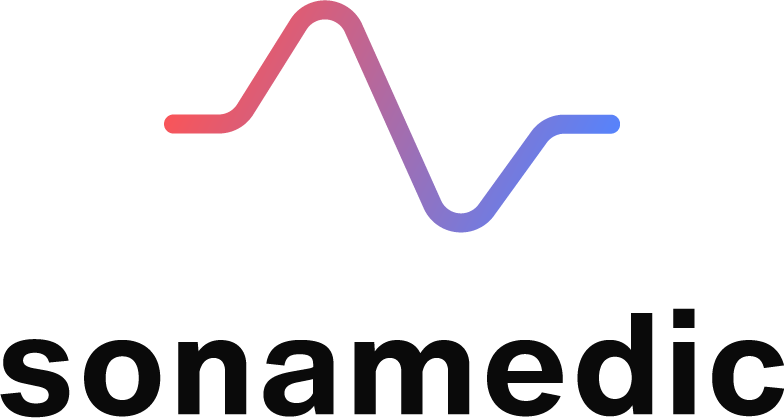Fall asleep and sleep through better with Binaural Beats
For our well-being it is extremely important to sleep sufficiently and healthily. A good night’s sleep makes you fitter, more concentrated, more relaxed, happier and helps you to organise your everyday life according to your own ideas. However, many people complain about problems sleeping, sleep too little or not restful enough, so that they feel exhausted and bad-tempered during the day or are unable to concentrate on their activities properly. Sleep deprivation can be caused by stress or emotional events, but sometimes it can develop into a chronic condition that is very stressful for those affected. People who sleep too little on a regular basis have an increased risk of diseases like high blood pressure, diabetes, obesity or depression. So don’t take your sleep problems lightly, but reflect on your sleep patterns and use opportunities for improvement if necessary.
A gentle method of influencing your sleep quality is brainwave synchronisation through binaural beats. This type of stimulation aims to help the brain to reach frequency ranges of electrical brain activity that occur during sleep in the different sleep phases. This helps, for example, when falling asleep or during the transition to the restful deep sleep phase. Binaural stimulation is an extremely gentle method that, unlike most conventional sleeping pills, does not have any side effects.
Binaural beats can be roughly divided into the following frequency ranges. Depending on the source, however, the information on the individual ranges sometimes differs slightly.
Delta frequency range: 0.1 to 4 Hertz
Theta frequency range: 4 to 8 Hertz
Alpha frequency range: 8 to 13 Hertz
Beta frequency range: 13 to 30 Hertz
Gamma frequency range: Over 30 Hertz
This article is intended to give you a brief insight into the world of sleep as well as sleep promotion, and to present three scientific studies that have examined different ways of dealing with this topic.
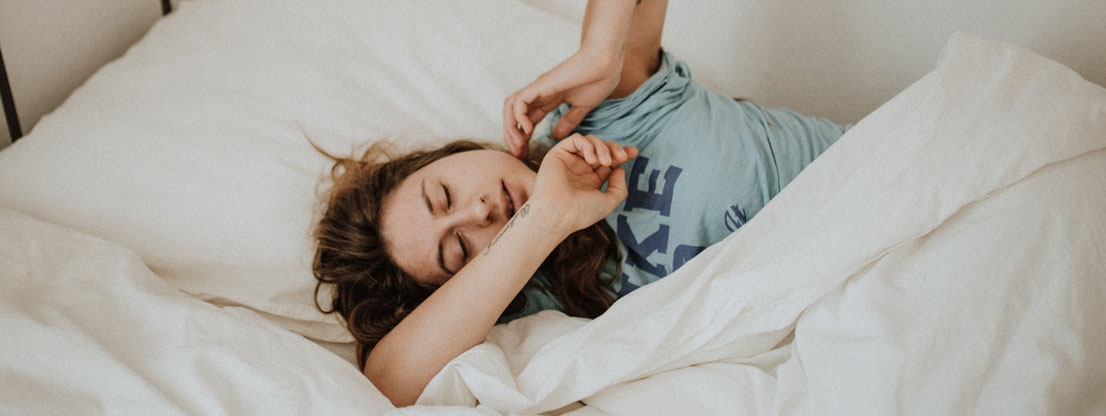
What happens during sleep?
Human sleep can be divided into different sleep phases, which are repeated several times a night in the sleep cycle where various physical and mental processes take place. Science distinguishes between the following sleep phases:
The N1 sleep phase (NREM phase 1) represents the transition from waking to sleeping. This is when your muscles relax. Breathing and blood pressure gradually become more even.
In the N2 phase we enter a stable sleep state, the muscles continue to relax and breathing and pulse are slowed down. In this sleep phase, no more eye movements can be detected.
The third sleep phase N3 is the deep sleep phase. Blood pressure, heart rate and breathing are slowed down even further, the eyes do not move. In this sleep phase, the body regenerates and the immune system is strengthened. In addition, the brain deals with the events of the previous day, which improves memory.
In the subsequent R-REM sleep phase (REM = rapid eye movement), the brain is very active, the eyes move rapidly under the closed eyelids, heart and breathing rates and blood pressure rise. In this phase you experience particularly intense dreams and your long-term memory improves. [1]
The role of sleep and its influence on our well-being has not yet been fully researched. Many studies have focused more on the negative effects of sleep deprivation. This makes it all the more important to look at different ways of promoting sleep in order to find alternatives or complementary approaches to conventional treatments.
1. Study: Brainwaveentrainment for better sleep and post sleep state of young elite soccer players – A pilot study
Study summary
This study deals with the question of whether the sleep quality of athletes can be improved by means of targeted brain wave synchronisation through binaural beats and whether positive effects can also be seen in their mood after waking up. To this end, 15 young professional football players were stimulated with binaural sounds during their sleep over a period of eight weeks. The stimulation was carried out using ergonomic pillows with built-in loudspeakers. In order to determine subjectively perceived changes caused by binaural stimulation, the test persons answered three questionnaires once a week shortly after waking up: a sleep diary, a list of adjectives relating to their psychophysiological state and perceived motivation, and a self-assessment questionnaire on the quality of sleep and wake-up. 15 sports students represented the control group, also slept on the ergonomic pillows and followed the same sleep protocol, but without binaural stimulation. The subjective assessment of sleep and wake-up quality, fatigue and motivation was significantly better in the experimental group than in the comparison group after eight weeks of binaural stimulation. No effects at the physiological level could be found after the end of the trial, but the researchers assume tha t these might be delayed.
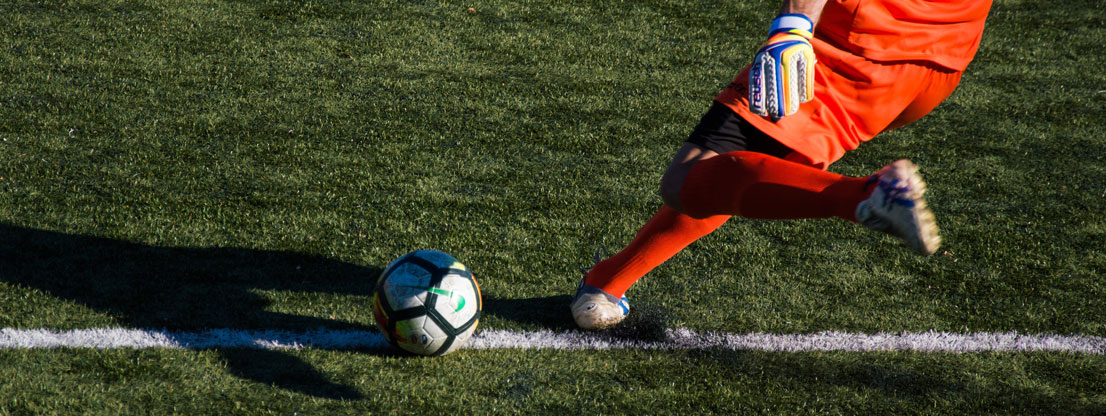
Scientific background of the study
In high-performance sports, health and optimal mental and physical sensation are required for maximum performance. Researchers suspected that all these factors could be optimised by improving the quality of sleep. The subjective psychological state of the test persons plays just as much a role as objective physiological parameters. Sleep quality can be determined by the frequency and amplitude of certain brain waves during sleep, especially alpha, theta and delta waves in the range of 1 – 9 Hz. The sleep phases include the phase of going to bed, waking up and relaxing lying down with eyes closed, in which alpha waves (8-13 Hz) are the dominant; the N1 sleep phase, in which waves of the theta frequency (4 – 7 Hz) are measured predominantly; the N2 sleep phase, in which the theta waves constantly prevail and sleep spindles of the frequency 11-16 Hz also occur; the N3 sleep phase, which is considered the transition phase to the deep sleep phase and in which waves of the delta frequency in the range 0.5 – 2 Hz occur; and the R-Rem sleep phase with a delta wave proportion of more than 50 percent. The entire sleep cycle lasts about 90 minutes and is repeated five to six times each night.
If the human brain is stimulated during sleep with frequencies between 1 and 9 Hz, which imitate the frequencies in phases of the human sleep cycle, we can speak of brain wave synchronisation, i.e. “brain wave training”, as the brain waves are guided by the frequencies that are tuned in.
Structure and procedure of the study
The main aim of this study was to investigate whether brain wave synchronisation can positively influence sleep quality and mood after waking up in top athletes. The researchers hypothesised that brainwave synchronisation improves sleep quality and shortens the time it takes to fall asleep. Based on previous scientific evidence, they hypothesised that improved sleep quality would have an effect similar to prolonged sleep times and that lack of sleep would have the opposite effect. The researchers also assumed that the athletes’ physical condition would be strengthened.
18 football players participated in the study, although three of them stopped taking part for personal reasons. Before the study, the participants stated that they were healthy and did not suffer from chronic sleep problems. They were informed in advance about the purpose of the study. The questionnaires were answered once a week on a fixed day shortly after sleeping late. Baseline data, which were used to measure the effect of binaural stimulation, were collected during the first two weeks without stimulation.
For the following eight weeks, the test persons used uniform ergonomic cushions, each with two integrated loudspeakers of high sound quality. The experimental group was tested during the competition season, the control group consisting of sports students during the semester. However, the students also carried out demanding physical activities during the survey phase. The auditory stimulation was divided into four phases of 22.5 minutes each, the first phase with binaural beats of the alpha frequency 8Hz, followed by a phase with beats of the theta frequency 6Hz, then the delta frequency 2Hz and in the last phase the theta frequency 4Hz. These four 22.5 minute periods should simulate a healthy 90 minute sleep rhythm. The acoustic stimulation ran in a continuous loop as long as the pillows were switched on. The participants were instructed to set the volume as low as possible, i.e. loud enough so that they did not feel disturbed by the binaural sounds.
Three questionnaires were used to record subjective sleep quality. For the first questionnaire, people were asked to keep a sleep diary in which they answered questions about the length and quality of their sleep and how often they woke up during the night. They were also asked to rank the quality of sleep they felt on a scale from 1 to 10. The second questionnaire consisted of 20 questions about sleep and wake-up quality (SSA questionnaire). The physical condition of the course participants was also taken into account here.
The test persons were also confronted with a web-based two-part adjective list. The study participants were asked to indicate the extent to which they could identify with the meaning of the respective adjective at the current time. The first part “body finder” contained 20 associative words for the categories physical energy, fitness, flexibility and health. The part “feel finder” contained adjectives on sleepiness, mood, inner peace, relaxation and motivation. The test persons were also able to assign a value of 0 (not at all) to 5 (absolute) to 16 adjectives using a “self-state scale”.

Conclusion and outcome
diary:
The participants of the experimental and control group gave clearly different information regarding the time of going to bed and the length of sleep. It was also observed that the female participants in the study went to bed earlier on average and subjectively rated their sleep quality as higher. There were no significant changes in the subjects’ sleep behaviour, except during the holiday period in the control group. The experimental group generally went to bed earlier than the control group, which resulted in an overall longer sleep time. Towards the end of the experiment, the experimental group tended to fall asleep faster than the control group.
As a result, the participants in the experimental group rated their sleep quality on a scale of 1-10 during the binaural stimulation phase as significantly higher than before the intervention.
SSA questionnaire:
The SSA questionnaire showed a statistically relevant increase in the experimental group in four values compared to the initial situation. The values for sleep and wake-up quality were significantly higher than before the intervention. A similar increase could not be observed in the control group.
adjective list:
The adjective scale, which was intended to record parameters on physical condition, psychological stress and motivation, showed a significant difference, especially in “perceived motivation”. For the sub-category “drowsiness” the subjects also gave significantly lower values than before the intervention. The physical condition of the participants showed no significant changes.
Compared to the experimental group, the participants in the control group gave lower values for the parameter “motivation” and its sub-categories, apart from the sub-category “self-confidence”. The researchers suspect that the improved quality of sleep generally contributes to an increased self-perceived willingness to act. These observations are consistent with the improvements in the SSA questionnaire in the subcategories “ready for daily activities” and “ready for stress”.
The evaluation of the three questionnaires shows that brainwave synchronisation through binaural beats can have a positive effect on the parameters of sleep quality, wake-up quality and sleepiness. These results are consistent with results of previous research on the effects of sleep extension, which the researchers explain by the improved quality of sleep during the intervention phase.
Contrary to the researchers’ expectations, no improvement in physical well-being was observed in the trial. However, it should be noted that the study does not include an objective, but only a subjective self-assessment of the subjects’ physical fitness. An effect of brain wave synchronisation on them cannot therefore be completely ruled out here. The researchers suspect that the physical effect might only occur with a time delay and is therefore not reflected in the results of the study
Conclusion:
Based on the results, it can be said that brainwave synchronization during sleep has proven to be a useful method to improve sleep quality and mood after athletes get up in a non-invasive, time-saving and comfortable way. Improved sleep quality and mental well-being can support performance in training and competition for athletes.
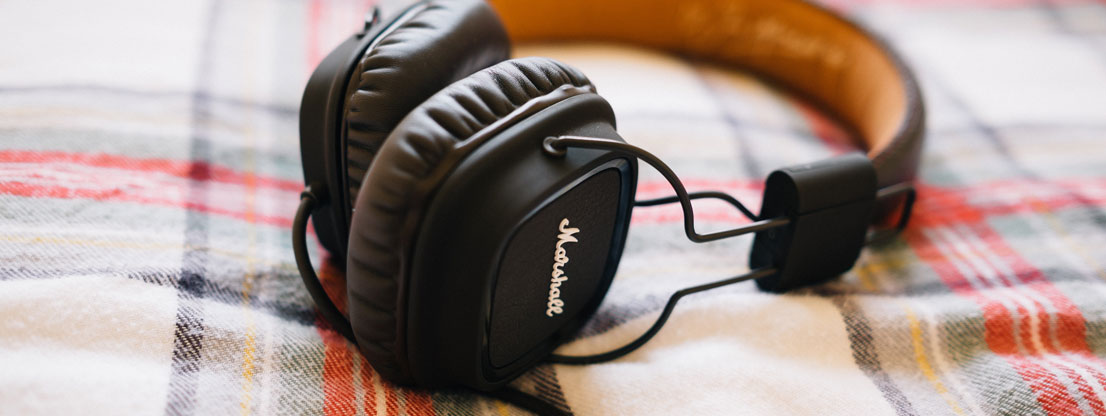
2. Study: A novel Insight of Effects of 3 Hz Binaural Beats on Sleep Stages during Sleep
Study summary
This study investigated the effect of 3-Hz binaural beats on different sleep stages. 24 subjects were divided into an experimental and a control group. The subjects in both groups went through the same procedure, but only the participants in the experimental group were stimulated with binaural beats. The binaural stimulation was started when the first phase of the N2 sleep stage started and stopped when the subjects reached the first phase of the N3 sleep stage. For the control group, silence was used as a dummy stimulus. The subjects did not know which of the two groups they were divided into. The results show that the duration of the N3 sleep stage of the experimental group lasted longer compared to the control group and the duration of the N2 stage was shorter. Furthermore, the N3 latency of the experimental group was reduced. The study confirms that a 3-Hz binaural beat can be used to influence neuronal activity. The N2 phase was shortened and the N3 phase was initiated and extended without disturbing or fragmenting sleep. The third sleep phase is associated with deep sleep, and brain activity is very low during this phase. In this sleep phase, all bodily functions are throttled back and the body regenerates. Nowadays, the N3 stage is often disturbed by increased stress. As experiences or events in the N3 sleep stage are recapitulated and anchored in long-term memory, an extension of the N3 sleep stage can even be used to improve memory.
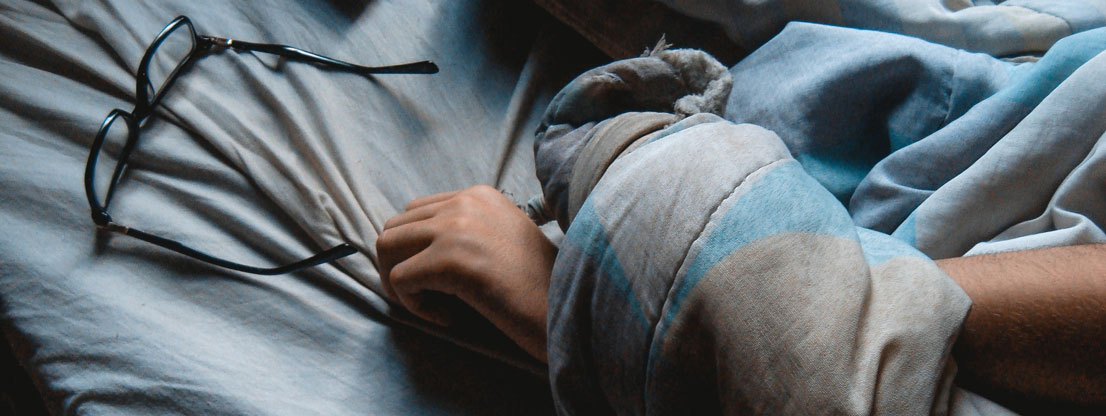
Structure and procedure of the study
The study investigated the effect of 3-Hz binaural stimulation on a 250-Hz carrier tone and its influence on the sleep of the experimental group during the third night. Electroencephalogram (EEG), electro-oculogram (EOG) and electromyogram (EMGs) were used to identify the sleep phases. The effects of the stimulus on the sleep phases were studied mainly in the experimental group, but a control group was formed to ensure that the observations were a stimulus effect and not an adaptation to the environment. The experimental group consisted of 16 participants, eight men and eight women, with one of the subjects stopping the experiment prematurely. The control group, on the other hand, consisted of only eight participants, including five men and three women.
The experiment lasted three consecutive nights. One adaptation night, in which the study participants had to get used to the study environment, one night to measure the normal state and thus the basic conditions, and one experimental night. On the third night the experimental group was stimulated with a 3-Hz binaural beat, the dummy condition for the control group was silence.
The emotions and mood of the participants were measured using the Brunel Mood Scale Questionnaire (BRUMS). This included values for the parameters “anxiety”, “confusion”, “dejection”, “fatigue”, “tension” and “energy”. The test persons used wireless In ear headphones for the study.
Result and conclusion
After the participants in the experimental group were exposed to the binaural stimulus in the third night, a significant increase in minutes and percentage of sleep was observed for the N3 sleep phase. The N3 latency was significantly lower here. In the N2 sheep phase, a significant decrease was observed both in terms of the number of minutes and as a percentage of total sleep. The control group on the other hand slept almost exclusively in the N2 sleep phase every night. No significant changes were observed for the control condition. The extended duration of the N3 sleep phase also correlated with an increase in delta activity during the third night. An interesting effect in the N3 sleep phase is also the substituting function for memory.
Above all, the results show an increase in the delta activity of the experimental group during the experimental night compared to the previous night (p = 0.0293). Other frequency bandwidths did not differ statistically significantly in either the experimental or the control group.
Of the emotions surveyed using the BRUMS questionnaire, only the parameters “fatigue” and “energy” were evaluated on the experimental night in order to detect a possible negative influence of 3-Hz binaural stimulation. The results show that the fatigue factors decreased in both the experimental group and the control group. Two values for the category “energy” increased in the experimental group.

3. Study: Possible Effect of Binaural Beat Combined with Autonomous Sensory Meridian Response for Inducing Sleep
Study summary
One way of counteracting sleep problems is to accelerate falling asleep by means of acoustic stimulation through binaural beats. However, some people find the binaural beats disturbing. These disturbing sensations can be reduced by using an Autonomous Sensory Meridian Response (ASMR). ASMR refers to the experience of a tingling, pleasant sensation, which in this study was created using natural sounds. The researchers studied the auditory stimulus 6-Hz binaural beats, which induces theta frequencies (4-8 Hz). Theta frequencies are found in the brain during N-REM sleep phase 1.
In the first trial, the effect of 6 Hz binaural beats and ASMR stimuli was tested at three different decibel ratios to find the optimal combination ratio. The best effect was achieved with a 30:60 decibel ratio of binaural beats to ASMR to produce theta activity and psychological stability. In the second session, the effect of this combined stimulus was tested with the results of the control conditions “binaural beats only”, “ASMR stimulus only” and a dummy stimulus.
Both the exclusive stimulation with binaural beats and the combined stimulus of ASMR and binaural beat showed a positive effect on falling asleep. The combined stimulus retained the benefits of binaural stimulation, while attenuating its interference from ASMR sounds, further enhancing the effect.

Structure and procedure of the study
Because insufficient sleep is a widespread problem with major health, social and economic implications, there are a number of methods to promote fast sleep. However, many of these methods are impracticable in everyday life and some of them even produce the opposite effects. Sensory stimulation, especially through an auditory stimulus, offers an easy-to-use and gentle way to promote your own sleep.
Fifteen subjects participated in the presented study to assess the effect of the combination of binaural and ASMR stimulation compared to several control stimuli. The researchers used 6-Hz binaural stimulation to stimulate theta frequencies (4-8 Hz) that are active during the N1 sleep phase. A 250 Hz carrier tone and a 256 Hz offset tone were used to generate the binaural beats. The discomfort of binaural stimulation was attenuated with natural sounds (ASMR sounds), which provide pleasant sensations. The five ASMR triggers (rain, waves, waterfall, forest and river) were played randomly in the study.
During the first experiment the participants had to keep their eyes closed. Here the effect of different decibel ratios from ASMR to binaural beats was to be tested. To record these, the participants were asked to answer a questionnaire about their emotional state. For two minutes, the subjects remained in a recovery phase without stimulus with their eyes closed. Afterwards, the acoustic stimulus was presented over headphones for three minutes. The three different sound conditions were played to the test persons in random order one after the other.
In the second experiment, the effects of the stimulus situations ASMR & binaural beats, binaural beats only, ASMR stimulus only and a dummy stimulus were to be investigated. For this purpose, the subjects were exposed to the acoustic stimuli for 10 minutes each and the resting state before and after the two-minute break between the individual stimulus was recorded. The researchers used this basic condition as a starting point for recording changes during the stimulation phase.
The researchers also studied psychological stability before and after administration of the auditory stimuli. To do this, they used the 32-value Brunel’s mood scale (BRUMS-32). This questionnaire measures eight mood factors through four subordinate mood descriptions each: The factors are “annoyance”, “restlessness”, “dejection”, “energy”, “fatigue”, “confusion”, “satisfaction” and “inner peace”. The test persons rated the individual points on a scale with five sub-categories from 0 = not at all to 4 = extreme. The highest overall value for a factor that can be achieved is therefore 16.
The EEG data was recorded at a sampling rate of 500 Hz and then statistically evaluated.

Result and conclusion
Session 1:
In the first session the participants of the study were confronted with three different decibel rates from binaural beats to ASMR sounds. The tested ratios were 45:60, 30:60 and 20:60.
The evaluation of the BRUMS-32 value before and after the acoustic stimulation, which was intended to record psychological well-being, showed that the four negative emotional states “annoyance”, “restlessness”, “dejection” and “confusion” were reduced compared to the initial condition. There were no significant changes in the fatigue values. The satisfaction values showed only a significant increase in CS 2 (CS 2= 30:60 BB at ASMR rate), the value for rest was significantly reduced in CS1 (CS1 = 45:60 BB at ASMR rate) compared to the baseline condition.
Session 2:
As a result of the first trial, CS2 (ratio 30:60 BB: ASMR rate) was selected as the optimal combination of the two stimuli Binaural Beat and ASMR Sound. In the second attempt, participants were confronted with the four different stimuli ASMR & Binaural Beats, Binaural Beats only, ASMR stimuli only and a dummy stimulus.
Statistical analysis showed an initiation of theta activity in the stimulations with ASMR, binaural beats and CS (ASMR & BB). Alpha activity was significantly reduced by all acoustic stimuli except the dummy stimulus. Only the CS condition also showed a significant reduction in beta activity. None of the changes were recorded in the control condition.
Mental stability was examined after the four stimuli compared to the initial situation. The value for “annoyance” was recorded more in the stimulation with unmasked binaural beats, but was significantly reduced in the CS stimulation. The values for “Tension” were significantly reduced as a result of both ASMR and CS stimulation. The value for “dejection” showed no change, but the “energy” decreased in all stimuli used. The value for “Confusion” showed a statistically relevant reduction only for the ASMR method. The satisfaction score for “satisfaction” decreased significantly during the dummy stimulus. The value for “inner peace” decreased with the binaural beats, but improved significantly for the ASMR stimuli and in the CS stimulus. The value for “confusion” was statistically reduced only with the ASMR triggers.
Conclusion:
The rate of CS2 (30:60 BB to ASMR rate) identified by the researchers in the first session was able to produce frequencies of the 6 Hz rate in the second experiment, which initiate the N1 sleep phase. The CS could also be used to suppress negative emotions and thus promote a situation in which the participants felt comfortable. This was more successful in the combination of ASMR and BBs than for binaural beats alone. The findings suggest that this method is an effective way to shorten the time it takes to fall asleep and improve overall sleep quality.
List of sources:
- Schlafapnoe Online: Der Schlafzyklus und seine Phasen,Datum des Zugriffs: 07.05.2020
